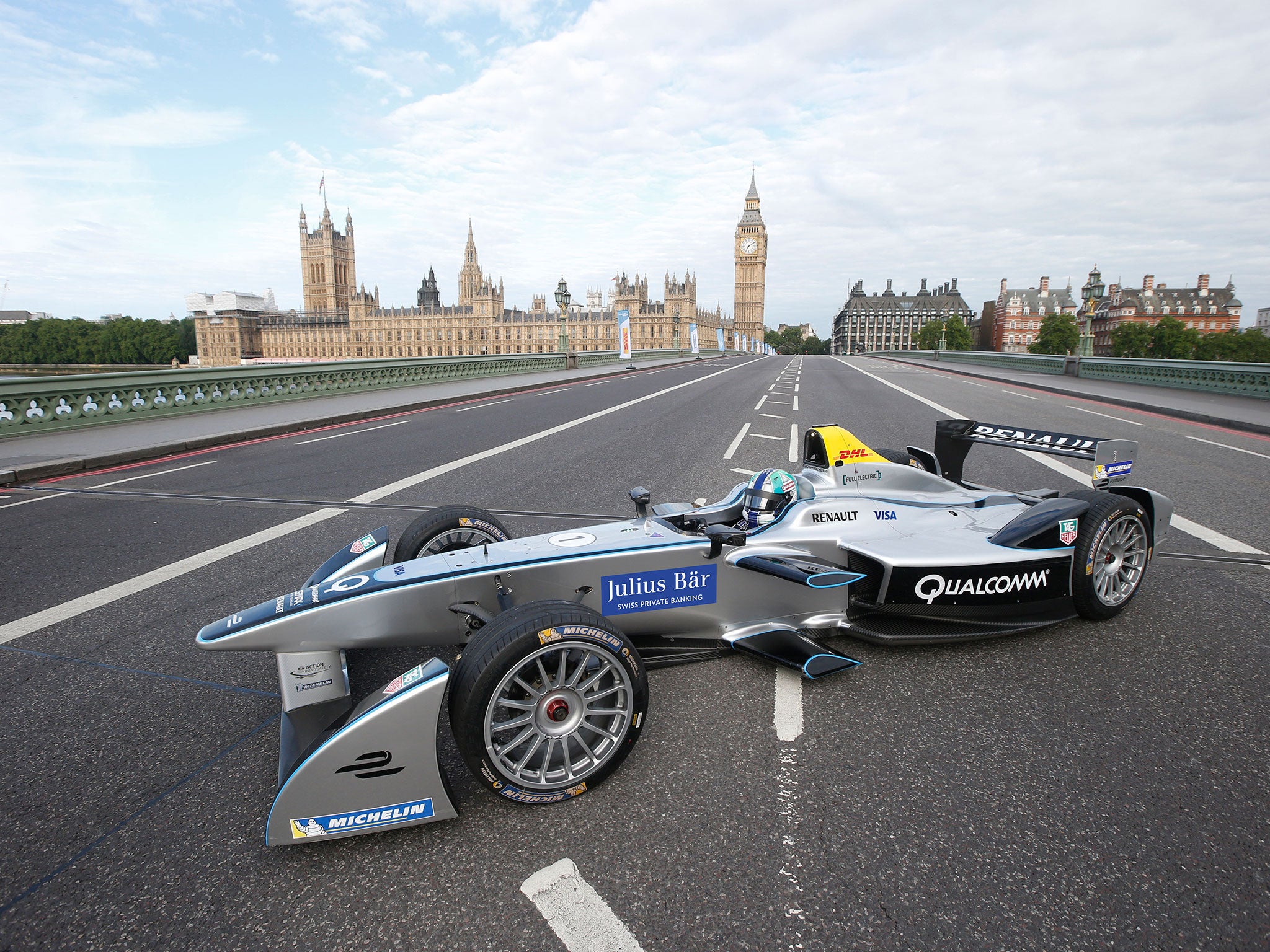Formula E 2015: London prepares to transform into the world's fastest city, but do you know your ePrix from your FanBoost?
Get clued up on the Formula E lingo ahead of this season's finale in London

The FIA Formula E finale hits the streets of London this weekend as Battersea Park is transformed into one of the world’s fastest cities for two days only.
With the first year of the motorsport series that relies solely on electrical power, the maiden campaign can only go down as a success. Heading into the final double-header weekend, six drivers are still mathematically in with a shout of winning the title – including British driver Sam Bird – and with 10 teams competing at speeds of up to 140mph on the tight and twisty streets of London, it’s no wonder why Formula E has taken off so quickly.
But how much do you know about the sport that has travelled across the globe, visiting the likes of Miami, Beijing, Moscow and Buenos Aires? Here, we help you get to grips with the class in the form of a jargon buster provided by Formula E sponsor Visa, so when you take a stroll around the capital this weekend you can sound on point.
Battery
Each Formula E race car is powered by a powerful lithium Ion battery and is the equivalent of 10,000 everyday AA batteries. This is enough to make the car travel at speeds of up to 140 miles per hour/225 kilometres per hour.
Current and Voltage
The flow of electricity that powers a Formula E car is called the current with the level of it known as the voltage. The higher the current and voltage, the greater the acceleration and top speeds.
Car Power and Watts
The power of the car system is measured in Watts, with 746Watts equal to a single brake horsepower. A Formula E race car can achieve approximately 200,000Watts of power equating to a whopping 270 brake horsepower, meaning it can travel from zero to 62/100 miles/ kilometres per hour in 3 seconds.
ePrix
Is the name given to a Formula E race, similar to a Grand Prix in Formula 1. From start to finish, each circuit race lasts approximately 45 minutes, with drivers making at least one mandatory pit stop to change cars.
eVillage
Although sounding like an internet based community dwelling, an eVillage is actually an urban style festival hub based at each race. It features entertainment and innovation from Formula E and its partners such as Visa Europe. Activities include eBike demos, driver autograph signings, race simulators, beat the wire and batak challenge.
FanBoost
Is a feature that’s unique to Formula E, where fans can vote for their favourite drivers online and through social media. The three drivers who receive the most votes, prior to a race, each receive a 5 second ‘power boost’ increasing their car’s power from 150,000 Watts to 180,000 Watts, or by 40 brake horsepower.
KiloWatt hours
Instead of measuring a car’s capacity in gallons/litres, as with petrol engines, Formula E cars are rated in kiloWatt-hours, as they use batteries. An electric race car consumes approximately 1,250 Watt-hours per mile/kilometre, on the racetrack.
Race mode
During a Formula E race, power is restricted to 150,000 Watts, or Race Mode.
But while terms like ‘FanBoost’ and ‘KiloWatt hours’ may be easy to understand for die-hard racing fans, the motorsport novice may not be clued up on the more general terms when it comes to getting behind the wheel. Any regular viewer of motor racing – be it Formula E, Formula 1 or the Le Mans 24 Hours – will regularly hear about ‘dirty air’ and hitting the ‘apex’, but what does it all mean?
Apex
Is the part of a corner where the racing line is nearest to the inside of the corner.
Clean air
Is air that has not been affected by turbulence from other cars in front.
Dirty air
By no means dirty, this is air that’s disrupted by another vehicle as it moves at high speed. It can cause aerodynamic difficulties for a car following closely behind.
Pit lane
The area all drivers temporarily stop during the race to change their Formula E car.
Qualifying
Qualifying sessions are pre-race ‘battles’ to win the fastest lap time and determine the position a racer starts the ePrix. Here, drivers can use the car’s maximum power output.
Everyone is getting involved, even the world's fastest man (outside of a Formula E car) and six-time Olympic gold medalist Usain Bolt is getting in on the act. The Jamaican sprinter has challenged the drivers to a 100m shootout, with the winner set to receive an extra fan boost - which you now have no excuses for not knowing what it is.
The London finale of the Formula E series takes place at Battersea Park on 27th and 28th June.
Subscribe to Independent Premium to bookmark this article
Want to bookmark your favourite articles and stories to read or reference later? Start your Independent Premium subscription today.

Join our commenting forum
Join thought-provoking conversations, follow other Independent readers and see their replies